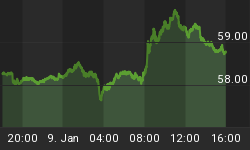I found an interesting pattern in studying corporate debt. Specifically yield spreads which is the difference between investment grade and below investment grade yield. As investors grow risk averse they prefer to move to the safety of investment grade debt thus driving yields lower. They do this buy selling below investment grade debt thus driving yields higher. The result are higher spreads.
So in theory if you compare credit spreads to equity prices the two should have an inverse correlation and the multi year chart below shows that to be true. As equity rallied over the past eight weeks notice how spreads have actually remained flat. If investor risk aversion was diminishing as equity implies you would expect spreads to fall. Especially over that long of a timeframe. But they have not.
The last time a similar event happened was May 2008 as the previous "great deleveraging" was underway. This is just another example of the ongoing war between credit and equity.
















